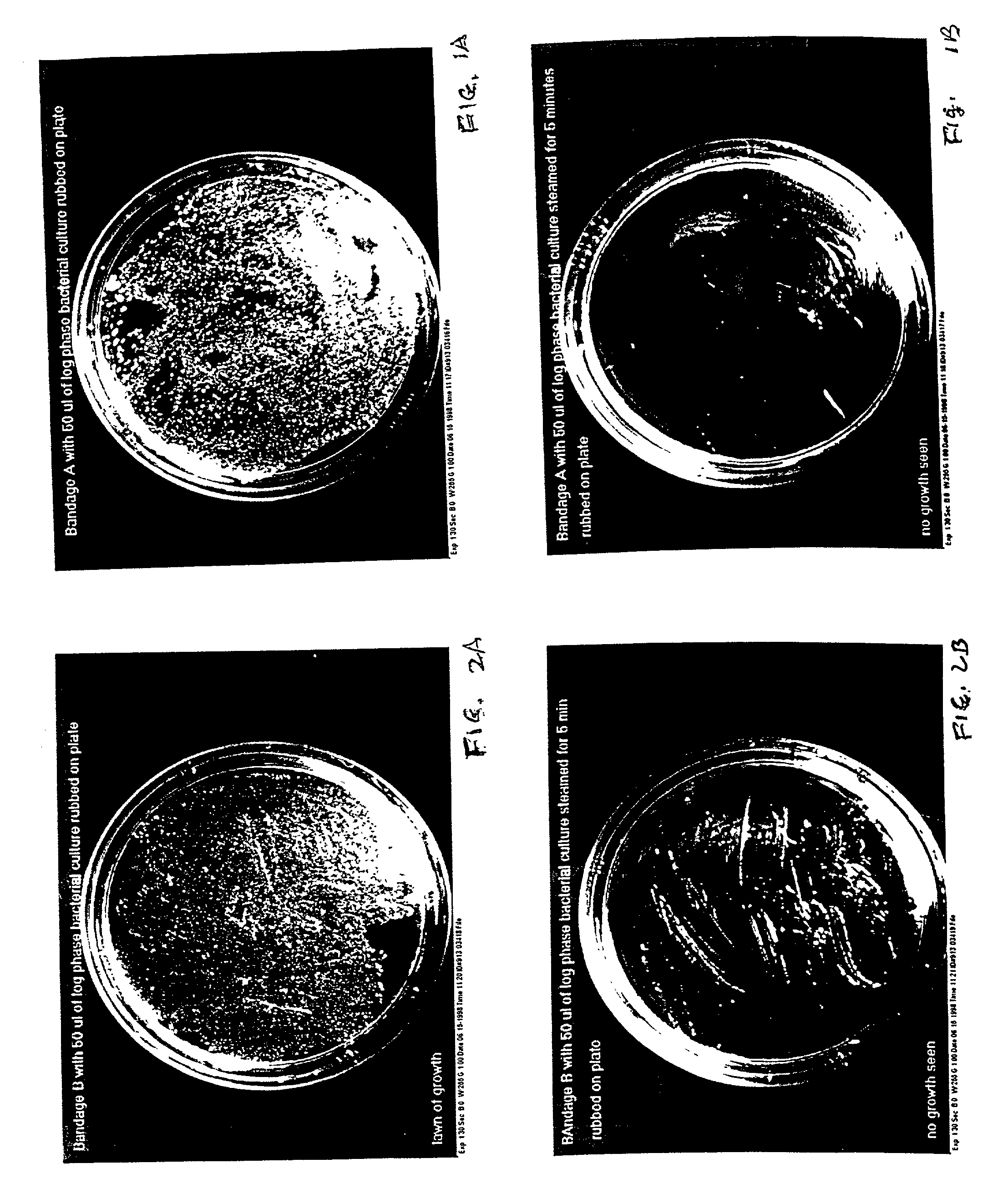Antiseptic packaged polyvinylpyrrolidone-cinnamic alcohol solid products and the like and method of preparing the same
a technology of cinnamic alcohol and packaged polyvinylpyrrolidone, which is applied in the field of antiseptic packaged polyvinylpyrrolidonecinnamic alcohol solid products and the like and method of preparing the same, which can solve the problems of turning out to be too radical
- Summary
- Abstract
- Description
- Claims
- Application Information
AI Technical Summary
Benefits of technology
Problems solved by technology
Method used
Image
Examples
example 1
[0017] A sample solid emulsion of the above-described type (sample A) was prepared in the manner described in said Gilbert patents A mixture was prepared from 2 92 g tannic acid powder U S P, 0.71 g cinnamic alcohol powder, and 28 32 g. polyvinylpyrrolidone sold by the GAF corporation under the trade designation K29-32, that is, a mixture of about 8 8 parts tannic acid, about 2.1 parts cinnamic alcohol, and about 85 parts polyvinylpyrrolidone, by weight The mixture was dissolved in 22 5 ml. water during agitation in a Waring blender, and the resulting viscous, yellowish solution was spread with a spatula over one side of a {fraction (3 / 32)} inch thick white foam rubber webbing About 29 6 ml solution covered about 258 cm.sup.2 of the substrate. After drying at room temperature, a thin, pale-yellowish, dry-to-touch film was obtained as the residue of the solution. (Such coated foam rubber webbing was earlier successfully used by Dr Gilbert in the infirmary of a manufacturing plant for...
example 2
[0019] The preparation technique, of Example 1 was used in a sample B prepared with iodine crystals in an alcohol base (ethanol) added to the mixture before drying, as taught in before-mentioned U.S. Pat. No. 4,094,967, namely, polyvinylpyrrolidone K30 (28 349 grams) was dissolved in 19 cc of water by agitation, using slow mixing Finely powdered crystalline iodine (1 gram) was dissolved in 15 cc of 95% alcohol (ethanol) and added to the wetted (emulsified) polyvinylpyrrolidone and slowly mixed thoroughly 2 grams of liquid cinnamic alcohol (solid form melted at about 100.degree. F.) was added to the above and slowly agitated Powdered tannic acid (2 grams) was then added to the above and mixed uniformly therein to form an emulsion The emulsion was then uniformly spread on a polyester dressing about 36 inches square and was permitted to air dry at substantially room temperature to evaporate the solvents and moisture to form an adherent unitary solid coating
[0020] Sample B, after standi...
examples 3 and 4
[0021] The same protocols described under Examples 1 and 2 for samples A and B, were performed, but with each sample intentionally contaminated with 10 .mu.l of E. coli before steam surface liquefying and vapor release, drying and swabbing over the agar. No growth was observed for either samples A or B.
PUM
| Property | Measurement | Unit |
|---|---|---|
| temperature | aaaaa | aaaaa |
| temperature | aaaaa | aaaaa |
| heat | aaaaa | aaaaa |
Abstract
Description
Claims
Application Information
 Login to View More
Login to View More - R&D
- Intellectual Property
- Life Sciences
- Materials
- Tech Scout
- Unparalleled Data Quality
- Higher Quality Content
- 60% Fewer Hallucinations
Browse by: Latest US Patents, China's latest patents, Technical Efficacy Thesaurus, Application Domain, Technology Topic, Popular Technical Reports.
© 2025 PatSnap. All rights reserved.Legal|Privacy policy|Modern Slavery Act Transparency Statement|Sitemap|About US| Contact US: help@patsnap.com


